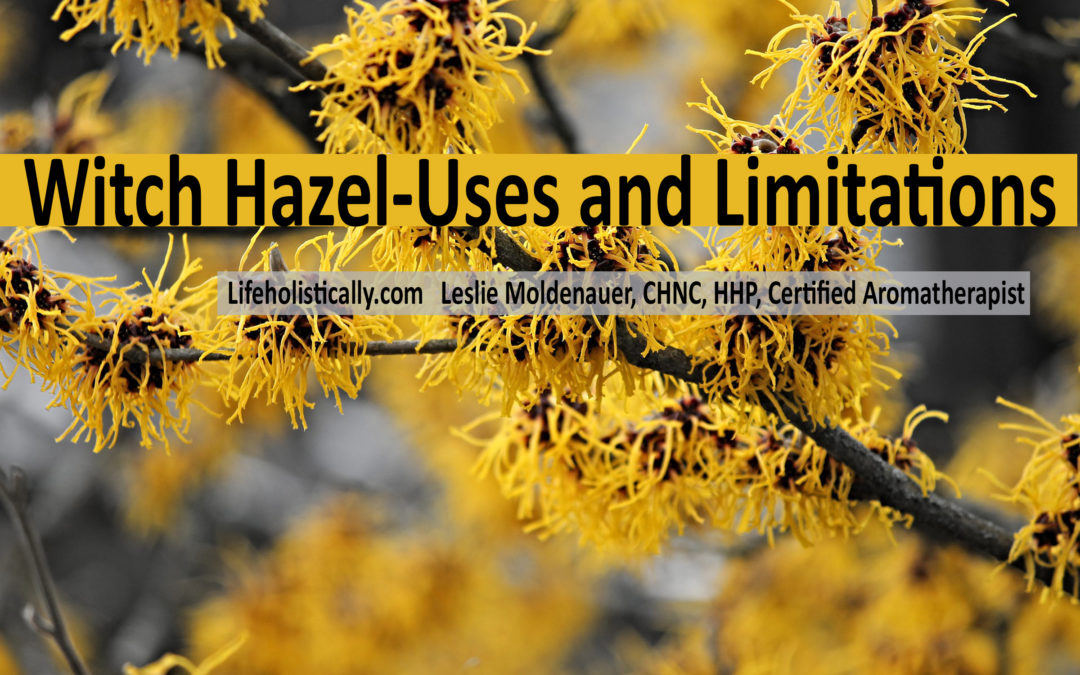
by Leslie Moldenauer | | Essential Oils
What is witch hazel? “Witch hazel is an astringent compound produced from the leaves and bark of the North American witch hazel shrub (Hamamelis virginiana). It is a component of many commercial healthcare products. Witch hazel water can be produced by maceration or distillation” [1]. Is witch hazel an emulsifier? Is witch hazel a preservative? Witch Hazel (Hamamelis virginiana)-Uses and Limitations
Witch Hazel (Hamamelis virginiana)-Uses and Limitations
Astringents are significant in skincare because they are quite efficient at the contraction of skin tissue, as a result, astringents in OTC (Over the counter) products like hemorrhoid crème and products to remove under-eye puffiness for example. You can Google the most well-known hemorrhoid crème and see that it contains a petrolatum base, along with shark liver oil, a number of other ‘stuff’, and 50% witch hazel. Witch hazel works!
We do not need all the other fillers in those products; we can purchase great quality organic witch hazel extract online and utilize it for a whole host of things. My recommendation is to purchase through Mountain Rose Herbs.
Witch hazel contains 14% alcohol, which is a really important point to remember. One may automatically think then it must be drying to the skin, but witch hazel is actually considered to be hydrating to the skin to a certain degree. One of the most popular uses aside from hemorrhoids is blemishes. It really helps to clear them up fast. How else can witch hazel be used?
When my boys were little I used witch hazel on their bottom to clear up red, itchy, irritated skin. Just be sure not to use at every diaper change as you may dry out the most sensitive skin. Two times a day and you will see a clearing of the issue quickly.
I use witch hazel as a toner on my face with a cotton round in place of soap. I have used witch hazel as a base for an after the shave lotion. Rashes, poison ivy, chickenpox, sunburn, windburn, cuts, and scrapes, you name it; witch hazel is a winner for the skin.
Some state it works great all by itself as a natural deodorant, but I admit I have not tried it in this manner….yet!
If you are familiar with working with hydrosols, you can purchase witch hazel in this form as well! According to hydrosol expert Suzanne Catty, the shelf life of witch hazel hydrosol is eight months to a year [2]. So, it is a bit shorter than witch hazel distillate, which is easily past that one year mark, and they both have all of the benefits I mentioned above and more!
Witch Hazel Limitations
Solubilizing Properties of Witch Hazel?
I wanted to be sure to address two different ways in which some state that witch hazel can be used that are not a true representation of the plants abilities. The first is that witch hazel is a proper and effective solubilizer, capable of dispersing essential oils in water. It is not. The theory is that the alcohol content within witch hazel will disperse the tiny droplets of oil in the water.
Herein lies the issue. Witch hazel contains only 14%-15% alcohol (Many on the store shelves are not alcohol-free).
DID YOU KNOW? 190 proof alcohol is what you would ideally need for it to act as a solubilizer (dispersing oils in water)? Even cheap vodka is not strong enough to help you get that done (If you have access to Everclear in your state, you are golden). If not, check this resource to get yourself some grain, grape, or cane alcohol. Witch hazel is not even coming close to being effective, as you can see in the multiple images I took below using German Chamomile (Matricaria chamomilla) for an effective visual.
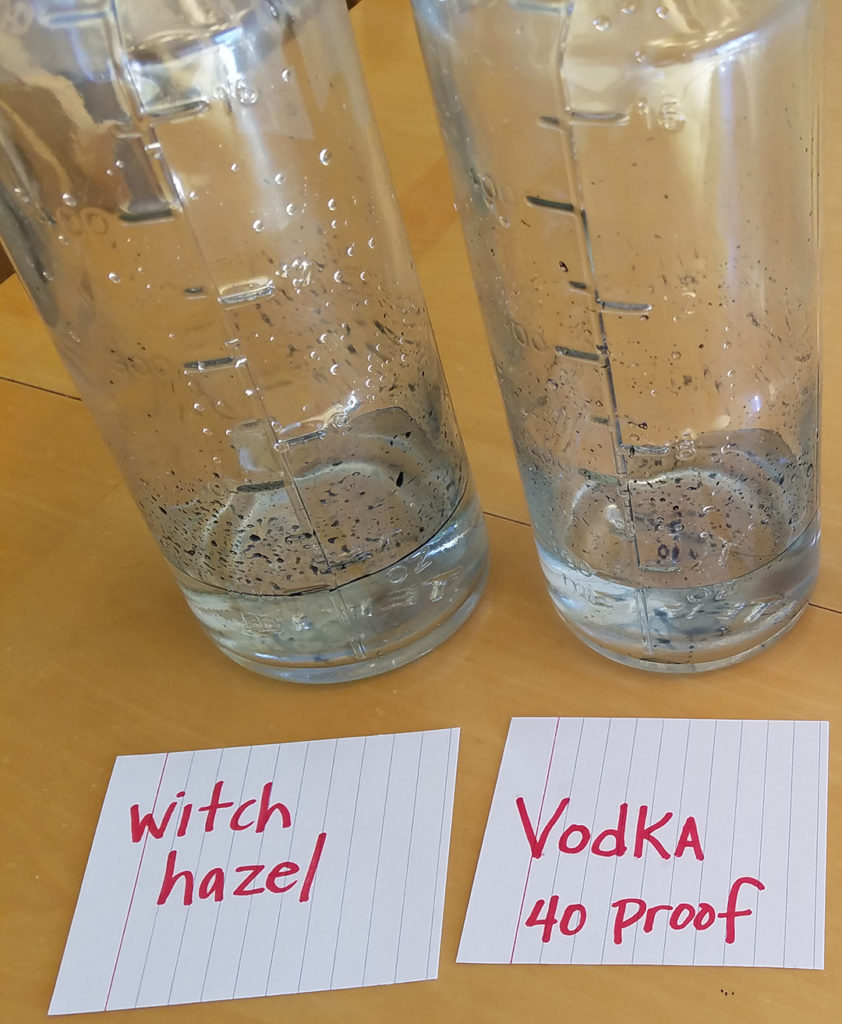
Image copyright Lifeholistically LLC
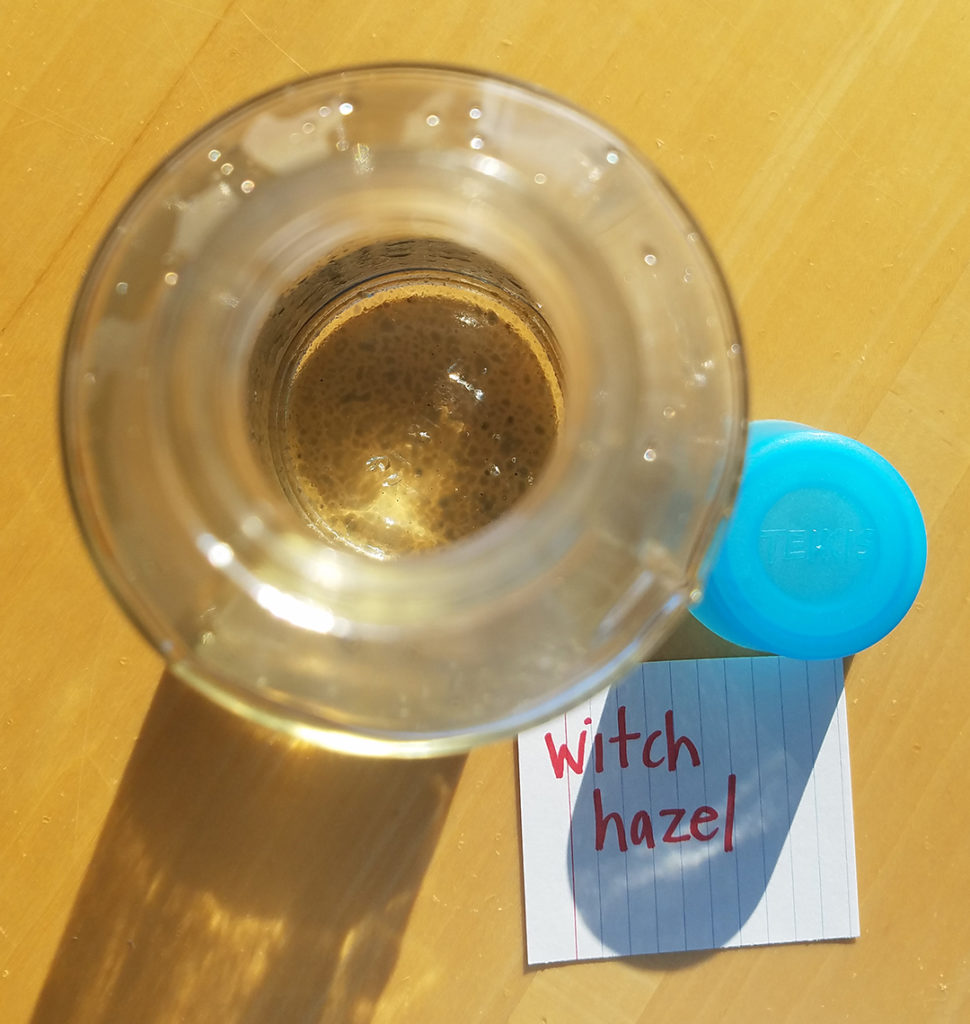
Image copyright Lifeholistically LLC
Seeing is believing, right?
Preservative Capabilities of Witch Hazel?
Some have stated that witch hazel also has preservative properties, however, this is not factual as alcohol can only preserve at very specific quantities. In order for alcohol to have true preservative properties, you are talking about 20-25% ethanol to be effective [3]. As you can see, witch hazel does not fit the bill.
High proof alcohol such as grain, grape, or cane in a room spray is a great option, however, if you are making large batches this could get costly. If you wanted to make something like this to be sprayed on the skin you are looking at the possibility of it being very drying, and there is a risk of skin irritation because it can strip away the skin’s moisture barrier.
Closing
So, we can now see that witch hazel is amazing for many things skin-related, it is not, however, a solubilizer or an effective preservative. If you have any questions regarding this topic, feel free to reach out to me personally @ Lifeholistically@gmail.com.
Like so many practices in life, I encourage you to become educated on the proper use of essential oils. When using them, please do so cautiously, understanding that there is often misinformation on the Internet. You can be assured that I support only educated and proven resources. While essential oils should not be feared they should be respected and used properly to ensure the safety of the individuals using them. Please note that I am not a medical practitioner. The content of the website is provided for general informational purposes only and is not intended as, nor should it be considered a substitute for, professional medical advice. Do not use the information on this website for diagnosing or treating any medical health condition. If you have or suspect you have a medical problem, promptly contact your professional healthcare provider. By using this website, you assume full responsibility and liability for your own actions.
References
[1] Riegler, D. (2013) Witch Hazel, Healer in the deep dark woods. Retrieved from https://apothecarysgarden.com/2013/05/26/witch-hazel-healer-in-the-dark-deep-woods/
[2] Catty, S. (2001). Hydrosols: The next aromatherapy. Rochester, VT: Healing Arts Press.
[3] Review of 27 preservatives. Retrieved from http://www.makingskincare.com/preservatives/
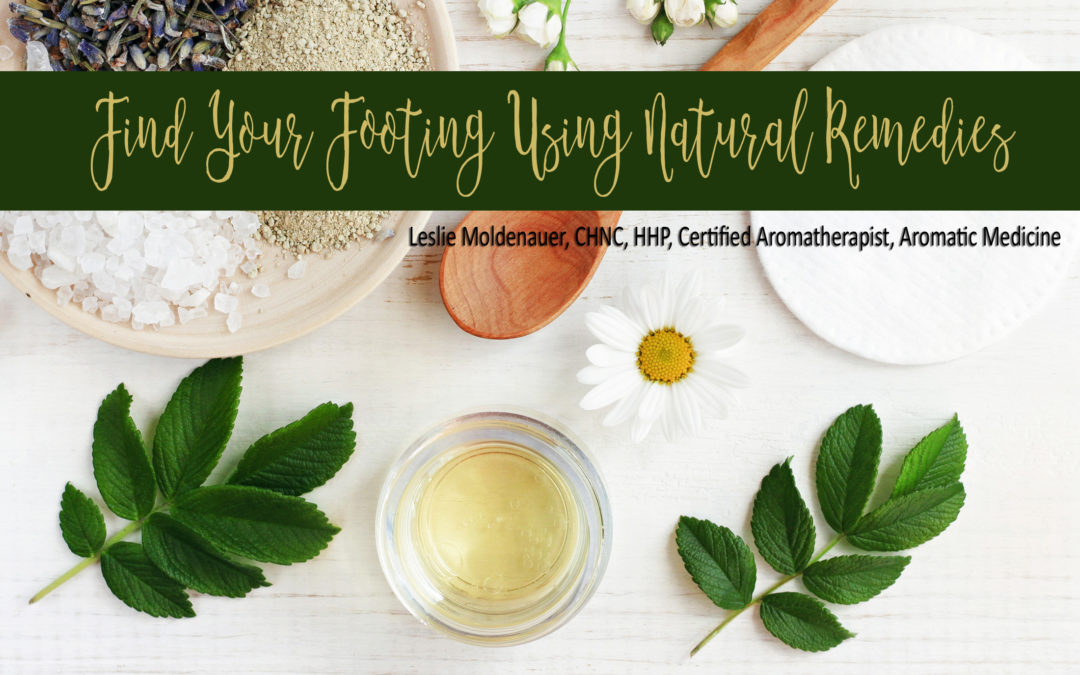
by Leslie Moldenauer | | Essential Oils, Herbs
Are you new to the realm of holistic remedies and therapies? It can be overwhelming. Learning what is safe and appropriate is not an easy task. I receive questions every day about what is safe, what is accurate, and what works. Due to the volume of questions I receive, I think that there may be some tips I can share with you to help you get into the fold. If you are ready to get your feet wet, I am ready to help. Find Your Footing Using Natural Remedies.
Just Do It?
Just do it? Well, maybe to a certain extent. Generally speaking, when looking at herbs such as lavender, chamomile, lemon balm, and elderberry to name a few….these herbs are others are gentle, safe and effective for all ages (This does not include babies exclusively breastfeeding).
One thing I do not recommend….is making Dr. Google an integral part of your research. Googling every symptom you or your child has is going to cause undue stress. Like, a lot of it!
By starting with herbs in the form of tea, for example, you will begin to build confidence, like a muscle, strengthening it with use.
A-ha moments are fabulous for confidence building. I remember a moment 20 years ago when I had an a-ha moment. I had suffered my first miscarriage and was young and confused. A coworker asked me to inhale lavender essential oil when I felt overwhelmed, as it had helped her. What an a-ha moment! What was this absolutely gorgeous heavenly scent in a small little bottle? How was it having such an effect on me? Even in the depths of despair and loss, sitting with the bottle under my nose, curled up in a ball……I was able to feel peaceful. That was the absolute beginning of my path using natural remedies. I was sold….hook, line, and sinker.
A few other great starters would be arnica gel for bumps and bruises, you can purchase it at Target! Elderberry syrup is another first that I recommend to my clients. It is great at the first sign of a cold or flu and is also effective for a cough. You can purchase it OTC at your local pharmacy.
Replace the popular OTC cough drops with Ricola herbal cough drops or reach for local honey (over 1 year of age) for allergy symptoms. These are just a few ways in which you can experiment and find an a-ha moment of your own.k
Start small like I did, just start.
Great Minds Think Alike
Surround yourself with those that share your views, or your curiosities. When you talk to friends who have had success utilizing natural remedies, trying them for yourself seems a bit more attainable. Just be cautious of “this worked great for me” kind of testimonials, especially when it comes to essential oils. There are a couple reasons for this. Essential oils are not always a one-size-fits-all kind of deal. Safe use is also something that needs great consideration. Listen, be inquisitive and hear what others are saying. Essential oils are not (in most cases) strictly placebo. They work, but they need a basic understanding in how to properly use them, as they are potent!
Complementary therapies are steadily becoming more popular. According to the National Center for Complementary and Integrative Health, “in the United States, approximately 38 percent of adults (about 4 in 10) and approximately 12 percent of children (about 1 in 9) are using some form of complementary alternative medicine” [1].
The numbers are steadily growing, and woohoo is it exciting!!!!!
Ask For Help
You can find solid information on some of the very basics online, but reaching out to someone that is well versed in holistic remedies is really important. I see misinformation (well-meaning) every single day online. If you are really, really lucky…you may have found an allopathic doctor that supports your wishes to begin using more natural remedies in the home. Unfortunately, this is a bit rare…although I do feel they are out there.
Great Chiropractors can also be a great find, but also a rare gem when they know CAM in all it’s beautiful and many facets, able to assist you with all of your questions. Unfortunately, we are not there yet, so it is important to find out the true qualifications of those that you are asking for help. Even if they recommend essential oils, have them sitting on the shelves, or are diffusing them in the office, it does not automatically mean they understand safety surrounding their use. You will want to find someone that is honest and will refer you to someone that can help answer your questions if they can’t.
As a practitioner with a degree in CAM, I understand the importance of working within your scope of practice. All professionals need to do the same, but this is not the current reality across the board of CAM practices.
Where herbs and essential oils are concerned, the laymen can learn quite a lot through self-exploration and home study, but I am a firm believer that if you are not ready to seek your own education in the practice, finding a mentor is needed to moving into the true therapeutic practices of any CAM modality.
Are you in the market for a mentor? I will do everything that I can to provide you with just that. There will be many opportunities in the second half of 2018 and beyond to invest in your health and the health of your children/family with more than just one of my typical blogs. Exciting times are ahead!
To your healthy explorations.
Like so many practices in life I encourage you to become educated on the proper use of essential oils. When using them, please do so cautiously, understanding that there is often misinformation on the Internet. You can be assured that I support only educated and proven resources. While essential oils should not be feared they should be respected and used properly to ensure the safety of the individuals using them. Please note that I am not a medical practitioner. The content of the website is provided for general informational purposes only and is not intended as, nor should is be considered a substitute for, professional medical advice. Do not use the information on this website for diagnosing or treating any medical health condition. If you have, or suspect you have a medical problem, promptly contact your professional healthcare provider. By using this website, you assume full responsibility and liability for your own actions.

References
[1] The use of complementary and alternative medicine in the United States. Retrieved from https://nccih.nih.gov/research/statistics/2007/camsurvey_fs1.htm
My Holistic “First Aid” Kit-Essential Oils Herbs & Homeopathy
My Holistic First Aid Kit II
BEFORE YOU GO! Remember to sign up for my FREE Facebook group! Hang out with me and THOUSANDS of other Essential Oil lovers looking to learn, click on to join Real Essential Oil Education Group!
Check out my FREE offer below!
[et_bloom_inline optin_id=optin_3]
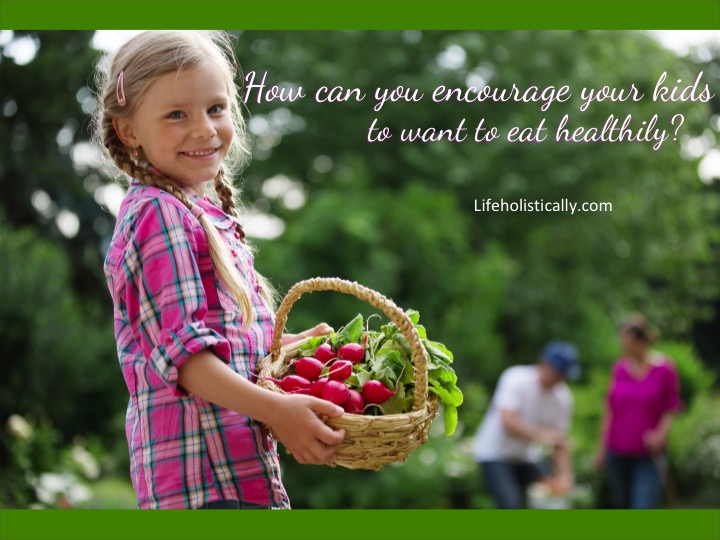
by Leslie Moldenauer | | Body, Essential Oils, Food
Have you ever felt defeated and found yourself thinking, “How can I do better for my kids?” or “How do I teach them healthier habits?” you are not alone. Encourage your kids to eat healthily!
I hope to give you some ideas/ways that this can be accomplished. Take away what works for you and leave what doesn’t. Most importantly, just know on any given day that you are doing your best, and that is all you can do.
I have a couple of solid rules regarding what type of food I bring into the home; they are my “food rules.” Perhaps you have food rules too and have not even thought twice about it.
Here are a few of mine that I will cover in more detail:
-Avoid GMO’s
-Organic fruits and vegetables (Avoid dirty dozen)
-Limit sugar
-Meat and dairy always come from organic 100% grass-fed animals
-Limit processed food
-Plenty of clean water
-Limit grains
-No BPA/plastic
-Avoid GMO’s
I am a firm believer in knowing not only what is in my food, but also where it comes from. I do not support the genetically modified (GMO) food movement that is in full swing in the US. This can be overwhelming for some if you do not know what to look for on a food label. I know it was for me at first, so I hope I can help you to be able to identify them too!
What exactly are GMOs? GMOs (or “genetically modified organisms”) are living organisms whose genetic material has been artificially manipulated in a laboratory through genetic engineering, or GE. Most developed nations do not consider GMOs to be safe. More than 60 countries have significantly limited or completely banned the production and sales of GM food. Many states here in the US have fought for the minimum of GMO labeling, so consumers can at least choose what they want to spend their grocery dollars on, but this has proven to be a big uphill battle.
You may be surprised to know that over 80% of processed foods have been modified!
Here are the main crops:
-Alfalfa (first planting 2011)
-Canola (approx. 90% of US crop)
-Corn (approx. 88% of US crop in 2011)
-Cotton (approx. 90% of US crop in 2011)
-Papaya (most of the Hawaiian crop; approximately 988 acres)
-Soy (approx. 94% of US crop in 2011)
-Sugar Beets (approx. 95% of US crop in 2010)
-Zucchini and Yellow Summer Squash (approx. 25,000 acres)
Source: NON-GMO Project
So to put this in perspective, you might want to take a walk through the grocery store and perform a little experiment. Look at labels on processed foods. See how many of them have sugar, corn, and soy in some form. It is going to be in just about everything you pick up. My first trip to the store to investigate was a huge eye-opener.
So what can you do to avoid it? Buy 100% organic, or a company proudly states on the box that they are part of the NON-GMO project, carrying this seal.
Here are some companies that proudly support the Non-GMO project.
Studies covering the safety of these foods long term is unknown, as they have never been done. We do not know what would happen in 10 or 20 years, which is a concern. If science manipulated it, I don’t eat it.
Organic Fruit and Vegetables
If you are new to buying organic, a great place to start is to make sure you buy organic when the item is on the dirty dozen list.
The EWG (Environmental Working Group) puts out a shopping list every year for consumers containing the dirty dozen (produce with the highest pesticide residue). We should purchase these items organic. There is also a clean fifteen (the cleanest of the bunch) that can safely be bought by conventionally grown methods. I always pay attention to the difference in price between organic and conventionally grown on the clean fifteen, because if the difference in cost is not significant, I prefer to support my organic and local farmer.
These are the lists for 2020:
Dirty Dozen
Strawberries
Spinach
Kale
Nectarines
Apples
Grapes
Peaches
Cherries
Pears
Tomatoes
Celery
Potato
Hot Pepper
Clean Fifteen
Sweet corn
Avocados
Pineapples
Onions
Frozen Sweet Peas
Papayas
Eggplant
Asparagus
Cauliflower
Cantaloupe
Brocolli
Mushroom
Cabbage
Honeydew Melon
Kiwi
Source: Environmental Working Group
No need to buy organic from the clean fifteen unless it is on sale, of course.
Here is a link to learn where your favorite fruit or vegetable lands on the list.
Limit Sugar
Sugar is very harmful to the body, and it is not just the empty calories utterly void of nutrition. Sugar provides no nutritional benefit at all, but what it does do is contribute to insulin resistance. The rise in obesity and diabetes is alarming. In 2015, 30.3 million Americans, or 9.4% of the population, had diabetes (Source).
In my home, I found that the times my kids get sick are times when we have faltered and consumed a little more sugar than usual. Now that my boys are 12 and 14, they notice it too. What a blessing that is! Sometimes they have to learn for themselves. I ask my then 10-year-old to create a Google presentation for me about sugar. Where can we find it, what does it do to the body, and whatever else he could come up with. I found kid-friendly sites, fun YouTube videos, and more. He is much more interested to learn about it when mom is not lecturing him. Maybe this trick will work for you too?
Do my kids have an occasional soda at a restaurant? Yes! Do we sometimes go out for frozen yogurt on a beautiful warm summer day? You bet! I do not deprive my kids of what they see as normalcy based on their surroundings outside the home. It is a delicate balance. If I teach my kids precisely what healthy means and they know that when they occasionally waver from that to have a treat that it is ok, I am doing a good job.
How far do I take this? You might be surprised. I have never brought my kids to McDonald’s, Burger King, or Taco Bell, or eaten a popular sugary cereal that cleverly targets kids through their brilliant marketing. They have never asked either. They have never tasted hot lunch at school. I have asked if they want to on a day where the option may be the best for the week, but they declined. So far, I must be doing something right.
Never eat anything that has a commercial on television
Avoiding sugar is not just avoiding candy, chocolate, and donuts. You may be surprised to know where excess sugar is hiding. Sugar is added to all processed foods, why? To make you want to eat more of it. By “you” I do not mean you consciously make that decision; I say that because sugar is so freakishly addicting. Here are some resources for you to learn more about the sugar epidemic and how to help you cut its hold on you:
Top 10 Big Ideas: How to Detox from Sugar
Refined Sugar: The Sweetest Poison of All
That Sugar Film
Source for Meat and Dairy
Grass-fed meat and dairy are far superior to grain-fed. Grass-fed beef is considered a health food due to high amounts of Omega 3’s and is rich in healthy fats (MUFA, PUFA, and SFA). You can be sure if you are purchasing 100% grass-fed organic meat and dairy, that you are not consuming any growth hormones, pesticides, or antibiotics either. Purchase the leanest variety you can find.
Here is a great article that covers this topic in greater detail.
Get plenty of healthy fats in your diet…fat does not make you fat!
Drink Plenty of Clean Water
Short and sweet. I do not bring soda into the home, but as I mentioned above, they get only get a soda when we eat out. Juice is likewise severely restricted. I like to make fruit infused water, and when my boys are not well, I make hydration drinks. They enjoy chocolate almond or oat milk, so we indulge in that. I also purchase flavored water when in a pinch.
No BPA
Bisphenol-A (BPA) mimics estrogen in the body. What does this mean? BPA had shown to disrupt the endocrine system by mimicking the body’s hormones (Source). The glands of your endocrine system are the hypothalamus, pineal gland, pituitary gland, thyroid, parathyroid, thymus, adrenal, and pancreas. BPA releases its influence on all of the glands, which have a direct influence on every cell, organ, and function of your body.
Look for canned food labeled BPA free. It has become relatively easy to find. BPA is in many plastics, but you will also find many bottles that are labeled BPA free as well. Some say that you can safely use plastic as long as 1-it is never heated and 2-never scratched while cleaning. I just prefer to avoid it altogether now that my children are a little older and can responsibly handle a silicone sleeved glass.
Limit Grains
We limit grains in our home. I am the only one that leans toward a Paleo lifestyle for health reasons. As far as my boys, I aim for whole grains and organic. I lean towards brown rice, quinoa, and sprouted bread. Remember that white bread, potato, and rice are very high in starch (GI index) and essentially turn to sugar in the body very fast (Source). The body needs whole grains to help balance the blood sugar all day long. Some scientists and physicians say two slices of whole wheat bread will likely raise your blood sugar levels as high as if you were eating a popular candy bar (Source). Keep this in mind if you or someone you love is struggling with balancing sugars.
How do I get my family on board with this? Get everyone involved!
I make considerable efforts to involve my children in making choices. One day I asked my boys, then approximately 5 and 7, to make a list of foods that they liked and ones they did not like. That was the beginning of the “team” aspect of eating in our house. Of course, kids’ pallets are forever changing and evolving, so we make lists often so that I can try to accommodate their likes the best I can. My boys know that even “cheat” type foods can be eaten in moderation as long as their diet is overall healthy, so those types of items never make their list. Even after they make their lists, my boys understand that eating is somewhat of a compromise. I always try to incorporate their current favorite vegetables, for example, but they know that there are going to be some meals that are not going to be their favorite. One day I make their absolute favorite meal of tacos, and the next, we have salmon and salad. Most days, this works quite well.
Sometimes there are complaints, but I gently remind them that one of their favorite meals will be on its way. I try to tell them of the importance of healthy food for the body, like gas for a car…and try to stay lighthearted. If there is one thing I am constantly reminded of, lecturing is not the answer, but sometimes I find myself doing that before I even realize it. The older they get, the more effective it is for them to learn these things on their own..sometimes with a gentle nudge in the right direction.
Once I know what they have chosen as like foods, I can prepare. I take the time to make meal plans on Sundays for the upcoming week. I always include 1 or 2 favorites that I know the kids will swoon over. With that list in hand, I go shopping. I can eliminate buying things we do not need this way and make for less waste at the end of the week (save your lists for easier future list-making).
You can include your kids in the kitchen too. Age will determine what they can do safely, but mine can gather ingredients, cut up vegetables, set the table while I cook, and taste things along the way.
I try to keep some freezer fruits and vegetables on hand at all times. Frozen fruit comes in handy for fruit infused water, smoothies, a quick bowl of peas, or frozen kale for vegetable soup. Frozen is just as nutritious as the fresh counterpart, and it is quick and easy when you are in a hurry.
I let my boys voice what they would like to have in their school lunch and snack. It helps to ensure they will eat what I give them. As they have gotten older, though, peer influence begins to affect what they want in lunch. They naturally wish to what their friends have, so I try to compromise here too.
We garden as a family. Everyone helps pull weeds, plant seeds and plants, water, and harvest. The boys love to see their hard work on the plate as much as I do. Little goes to waste this way.
In conclusion
Always try to lead by example. Your kids are always watching what you do, not necessarily what you say. Things will not always go smoothly. Be proud of yourself for doing your best and smile for what worked, do not beat yourself up for what didn’t. Eat together and play together. Get plenty of exercise and rest. You are well on your way to “your” best version of “your” health and happiness, and that is what matters.
Please note that I am not a medical practitioner. The content of this website is provided for general informational purposes only and is not intended as, nor should it be considered a substitute for, professional medical advice. Do not use the information on this website for diagnosing or treating any medical or health condition. If you have or suspect you have a medical problem, promptly contact your professional healthcare provider. By using this website, you assume full responsibility and liability for your own actions.
*Sources listed within the article in blue.
Like so many practices in life, I encourage you to become educated on the proper use of essential oils. When using them, please do so cautiously, understanding that there is often misinformation on the internet. You can be assured that I support only educated and proven resources. While essential oils should not be feared they should be respected and used properly to ensure the safety of the individuals using them.
Please note that I am not a medical practitioner. The content of this website is provided for general informational purposes only and is not intended as, nor should it be considered a substitute for, professional medical advice. Do not use the information on this website for diagnosing or treating any medical or health condition. If you have or suspect you have a medical problem, promptly contact your professional healthcare provider. By using this website, you assume full responsibility and liability for your own actions.
Raw Energy Bites
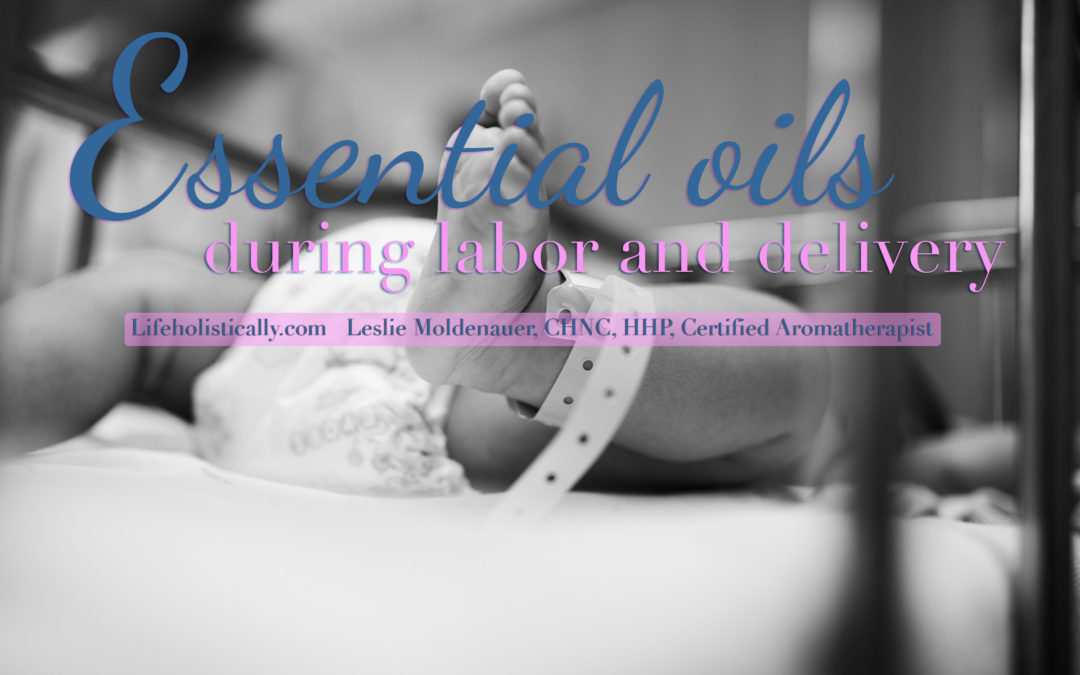
by Leslie Moldenauer | | Essential Oils
Essential Oil Safety…..There is often much debate about whether we can utilize aromatherapy in the birthing room, or during pregnancy at all. Is it safe? How do we do it? Let’s talk about what we need to consider- Utilizing Essential Oils During Labor and Delivery
If this is not your first pregnancy this should come as no surprise; your sense of smell is very heightened during this time. Smells that never bothered you before may now make you incredibly nauseous or even vomit. Perhaps an aroma you loved prior to pregnancy you do not like at all now. The opposite can also be true. Now, perhaps a new food has appeal simply because of its smell. You may even find that your partner smells better than ever! Enjoy that!
What causes this heightened sense of smell?
“The plasma volume (blood flow) in your body increases by up to 50 percent in pregnancy, so anything moving from your blood to your brain reaches it faster and in larger quantities. This heightens your responses and some experts think that’s why you react more strongly to smells,” says midwifery teacher Denyse Kirkby, author of, “My Mini Midwife” [1]. So, in theory, your olfactory receptors are also strongly affected by this increased blood flow.
Could this be another miracle of the body? Perhaps this is a protective mechanism to prohibit mom and fetus from inhaling anything potentially harmful? I would like to think that this is the case.
If you intend to utilize essential oils in the birthing room, you need to keep your heightened sense of smell in mind. The state of your body during labor also needs to be a part of the equation, as it and you will be in a heightened state of stress.
If you are unsure of what to choose, reach out to someone well versed in the use of essential oils during this sensitive time. If you do not have any major medical issues or are not taking any medication, aromatherapy is likely very safe. A trained aromatherapist will be happy to assist you to be sure.
Aromatherapy inhalers are my suggestion for the birthing room. I do not recommend filling the room with an essential oil blend via a diffuser for a number of reasons. First and foremost, your needs and wants will change, a lot. You will likely want to be as relaxed as you can be during increasing contractions up until it is time to push, then you will benefit from something to empower and awaken you while staying centered and focused. Those require different things.
Second, even though this is your experience with your partner, exposing everyone in the room to your diffuser blend is not a good idea. Public diffusing can be precarious. You do not know what other’s situations are in regard to health conditions, allergies or medications, and I do not know about you, but I would want my doctor, doula, midwife, and nurses to be alert, not enjoying a calming and sedating blend of essential oils, so please avoid direct diffusion in the birthing room.
I have been asked if there is anything that can be used to move labor along. What I consider moving labor along is not the same as how the question is usually intended. You can use essential oils to keep yourself calm, to keep the body from tensing and being overly-stressed, and by doing this, labor progresses nicely. The goal of essential oils should not be to induce or increase the intensity of your contractions or move labor along. This is not recommended. I have the same opinion of Pitocin. If this medication can be avoided, avoid it. Pitocin can cause problems such as intensified rapid contractions, so intense that both baby and mom can potentially become very distressed, increasing the need for medical interventions. I do understand that sometimes things are out of your control; so, do not beat yourself up about the way things progress in the delivery room. However, if you are able to pull it off, a natural birth is ideal.
Clary sage (Salvia sclarea) is an essential oil that is touted for starting labor. Unless you are working with a qualified clinical aromatherapist, do not use essential oils with this intention. Please let your body do what it knows to do, in its time. This does not mean, however, that clary sage needs to stay out of the birthing room.
Once labor is underway and contractions are regular, clary sage can be used safely in an inhaler to calm, with little potential for harm. I hope you can now differentiate between timing and wanted outcome.
You will find varying opinions on the Internet and in social media regarding whether essential oils are safe during pregnancy, labor, and delivery. Be sure to question the training and experience of anyone who has written a book or blog on a serious topic such as this. Aromatherapy and the use of essential oils are not regulated in the United States, so a license or degree is not required to give you and your family advice. During this special time of your life and the birth of your child, you will want to consult with a well-trained and qualified aromatherapist.
According to Jane Buckle Ph.D., RN, who is a very well respected aromatherapist, and founder of the American Holistic Nurses Association, aromatherapy is in fact very safe when you are well-versed in its safety and use. According to Buckle, aromatherapy has been used for years in a clinical setting without known harm to mom, infant or fetus [2]. Buckle has taught nurses all over the world how to safely use essential oils in their clinical practice.
I can’t stress this enough, do not pick up a random book or blog on essential oils for the birthing room. If you are unsure and would really like to explore the possibilities of using aromatherapy for you and your family, please reach out to a qualified aromatherapist.
Enjoy this FREE PDF download
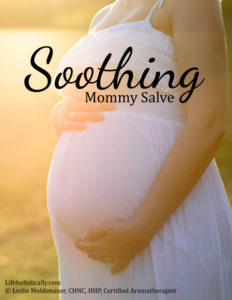 Click me >> Mommysalve
Click me >> Mommysalve
References
[9] Kirkby, D. (2014). My mini midwife: everything you need to know about pregnancy and birth. Chichester, West Sussex: Vie.
[10] Tillett, J., Ames, D. (2010) The uses of aromatherapy in women’s health. Journal of Perinatal & Neonatal Nursing. Vol. 24, No. 3, (pp. 238-245)
Resources
Postpartum Depression..The Importance of Asking for Help
Please note that I am not a medical practitioner. The content of this website is provided for general informational purposes only and is not intended as, nor should it be considered a substitute for, professional medical advice. Do not use the information on this website for diagnosing or treating any medical or health condition. If you have or suspect you have a medical problem, promptly contact your professional healthcare provider. By using this website, you assume full responsibility and liability for your own actions.
Essential Oil Safety for You and Your Family
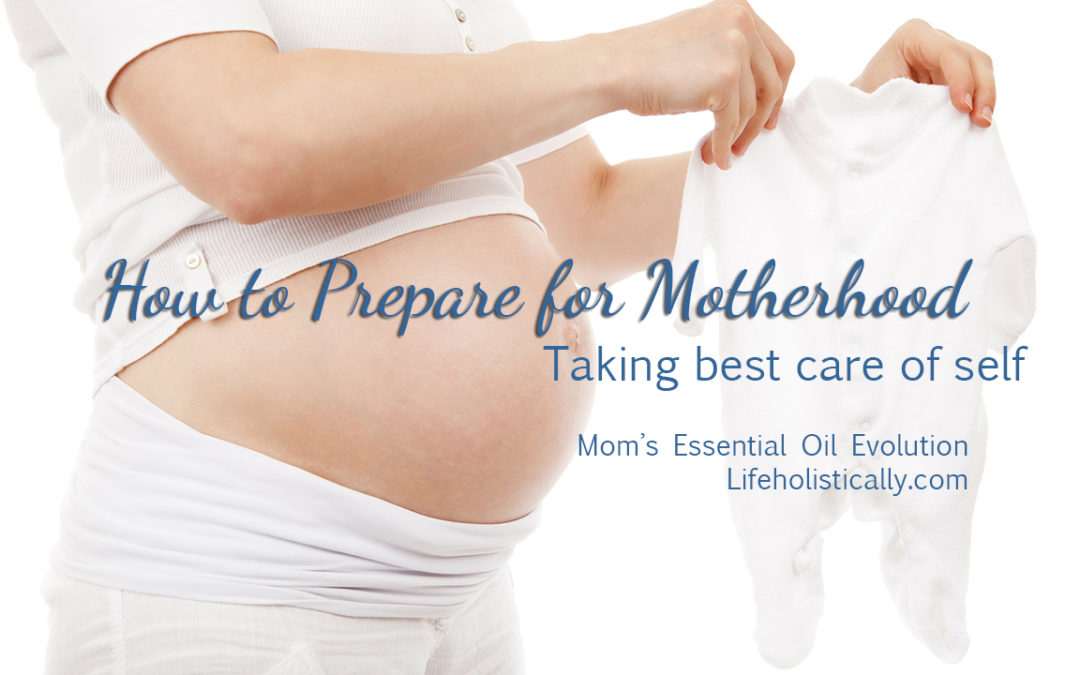
by Leslie Moldenauer | | Essential Oils, Spirit, Uncategorized
As women, “most” of us are not prepared for motherhood in the way I am about to discuss. Other than books and articles preparing us for Baby, such as the best seller, “What To Expect When Expecting,” there is not much at all by way of truly preparing us moms for this huge life shift. I am speaking emotionally, mentally and physically. We can find information in books regarding cracked nipples, perineum tears, how long to wait before sex, stretch marks and hemorrhoids, but ladies; we need so much more than that! During this important time, I am not sure how many of us really think about ourselves as the most important one! It is crucial that you begin to see it that way, even with that brand-new life that you have made and is about to be in your arms nearly 24-7! Prepare to take impeccable care of self, for your health and sanity, as well as everyone else’s around you. How to prepare for motherhood, taking best care of self.
In sweet anticipation of the new baby on the way, we make lists of what baby needs; the A-Z of the cornucopia of “stuff” needed to support the new life in the home. After birthing our offspring, we throw ourselves into their care with abandon. With this, we second guess if we are doing everything right. We agonize over why they are crying, and we may even worry about how other moms perceive us. In addition to this emotional conflict, we attempt to place them in a proverbial bubble, so they do not get sick, although this tends to be a phenomenon most prominent with the first-born. Through all of this, our own well being often takes a back seat, or maybe even the trunk.
It is an extraordinary moment when we allow ourselves to stop the world around us. If only for a minute, to capture a coy smile that appears while our babe is sound sleep, or to look into his or her eyes and really see their soul, or just take a few moments to daydream, pondering the miracle of life. Try to embrace more of these moments.
We are encouraged to sleep when the baby sleeps or take time for self-care. How many of you, who have been through this already, just thought, “Like I could ever have found time for that.” Everyone offers advice on what you “should” be doing, solicited or otherwise. It is easy to offer advice to others, but not always so easy to enforce it in your own life.
I am not necessarily saying that naps are the answer. I have never been much of a napper unless I was up all night with a growth spurt feeder, sick baby or under the weather myself. So, if you have had a particularly rough night, then perhaps yes, that is what would be of most benefit to you.
What I am really talking about here is true, self-care: no chores, no laundry, and no dishes. Perhaps a bath or a nice hot shower followed by moisturizing the newly sensitive areas is just what you need. I liked to place my oldest in his car carrier on the bathroom floor, and in that he slept as I bathed slowly and thoughtfully. The sound of the shower water, or my new age music if in the bath, provided extra soothing for both him and me.
Perhaps you can take a seat outdoors for a little bit of vitamin D and complete silence or take a walk while Baby naps in the stroller. While you walk, be sure to not go over the to-do list for once you arrive back home but take that time while your feet are hitting the pavement to look around you, soak up the sun and sounds, and truly rest your mind. When you get back home, read a book, have a nice warm cup of tea; something that helps you to slow down and supports your ability to truly unwind. Remind yourself how important you are during this time that is making many extra demands on you physically and emotionally. Maybe some self-pleasure is in order. Endorphins will do amazing things for any goddess! Remove the phrase, “I do not have time,” from your vocabulary; you are worth making the time.
So where do you start?
*Challenge:
In addition to your A-Z list of things that Baby needs, I challenge you to make your own A-Z list. When the house is quiet, sit down and make your list, something like this:
A. Ask for help, art, allow stillness, acupuncture
B. Bath, breath work, breast massage, book, Be
C. Candles, call a friend, cuddle in a warm blanket, cake, chakra cleansing, cook a healthy meal, create a special space, color
D. Dance, date night, “Dear self” letters
Try it, A-Z. Expand on it regularly. Put it somewhere where you will see it often and try to do a few of them every day.
Here is a fun and free printable for you to help make your list. Place it on your fridge, bathroom mirror or wherever in your home will be the most beneficial for you.
A-Z Selfcare list
“Solitude is where I place my chaos to rest and awaken my inner peace.”– Nikki Rowe
Learn a lot more like this in my latest book!
Mom’s Essential Oil Evolution

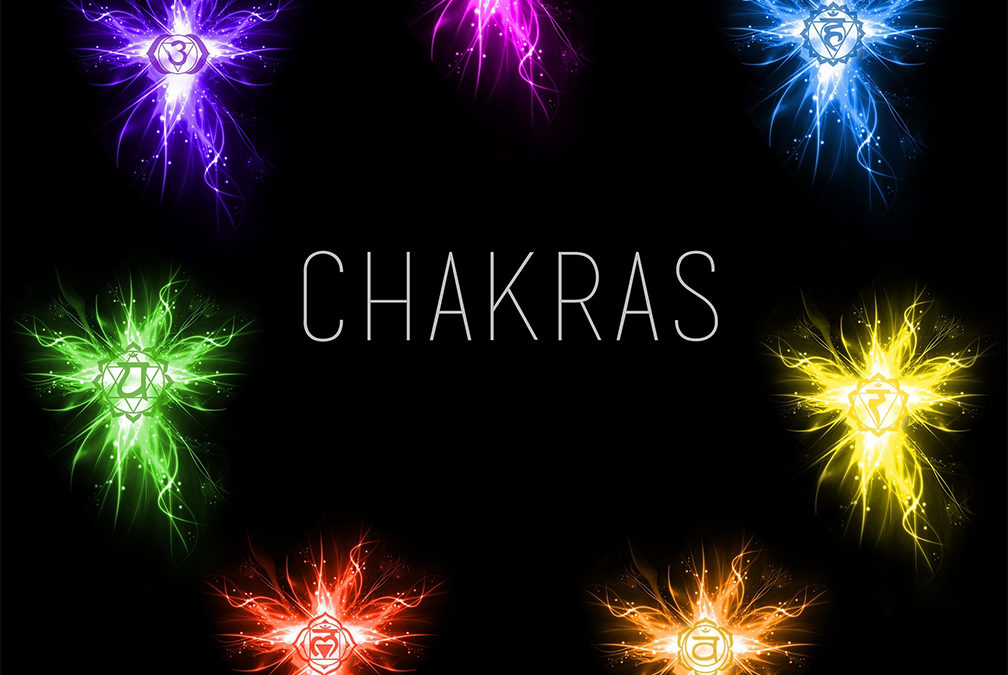
by Leslie Moldenauer | | Essential Oils
You may be asking yourself, what is a chakra? The Sanskrit word Chakra translates to wheel or disk. In yoga, meditation, and Ayurveda, this term refers to wheels of energy throughout the body [1].
With practice, you can visualize chakras in the body. Each chakra is a swirling wheel of energy..and they make up the energy in the body called Prana, which is our essential vital life force. Prana is also referred to as chi, ki or life energy [1].
Located exactly center of the chest, just behind the sternum, not in the actual location of your heart, is your heart chakra. The heart chakra is the fourth chakra and its Sanskrit name is Anahata. Anahata means “unhurt, unstruck, and unbeaten” [2]. There are quite a lot of emotions held here, and if we do not work through them or consistently work to clear the heart chakra…many things can be the result.
Color=Green
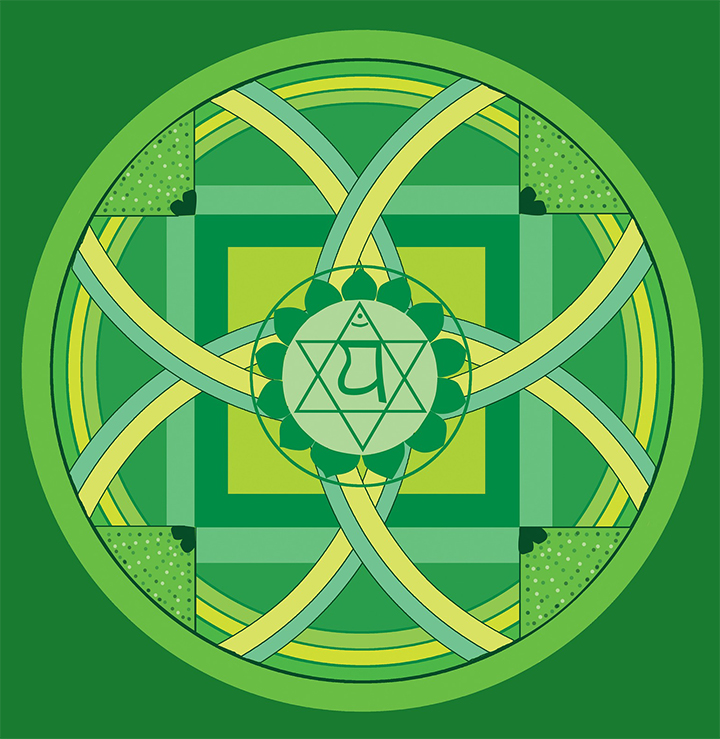
Free stock image
When your chakras are balanced and your heart chakra is open, you have a positive feeling of self. Self-love, self-confidence, and that love has to be easily shared with others are well. Kindness, compassion, and forgiveness are key emotions. One is likely to feel more of a ‘we’ moment, rather than an ‘I’ moment.
With my recent divorce and many different things going on in my community, I started to feel a lot of ‘I’ over the ‘we’ that I pride my sensitive Cancer personality on. I love my sensitivity and if you are sensitive as well…cherish it. It is what makes you unique. But because things in life were getting really heavy, I knew some work needed to be done.
I sought help. I saw two different therapists, one was on the more traditional end, and the second specializes in helping women get back to self. Both of them were very helpful. I saw them for a number of months, and they both encouraged me to reach out to my newly found close circle of friends and ask for help, as I had very much been suffering in silence.
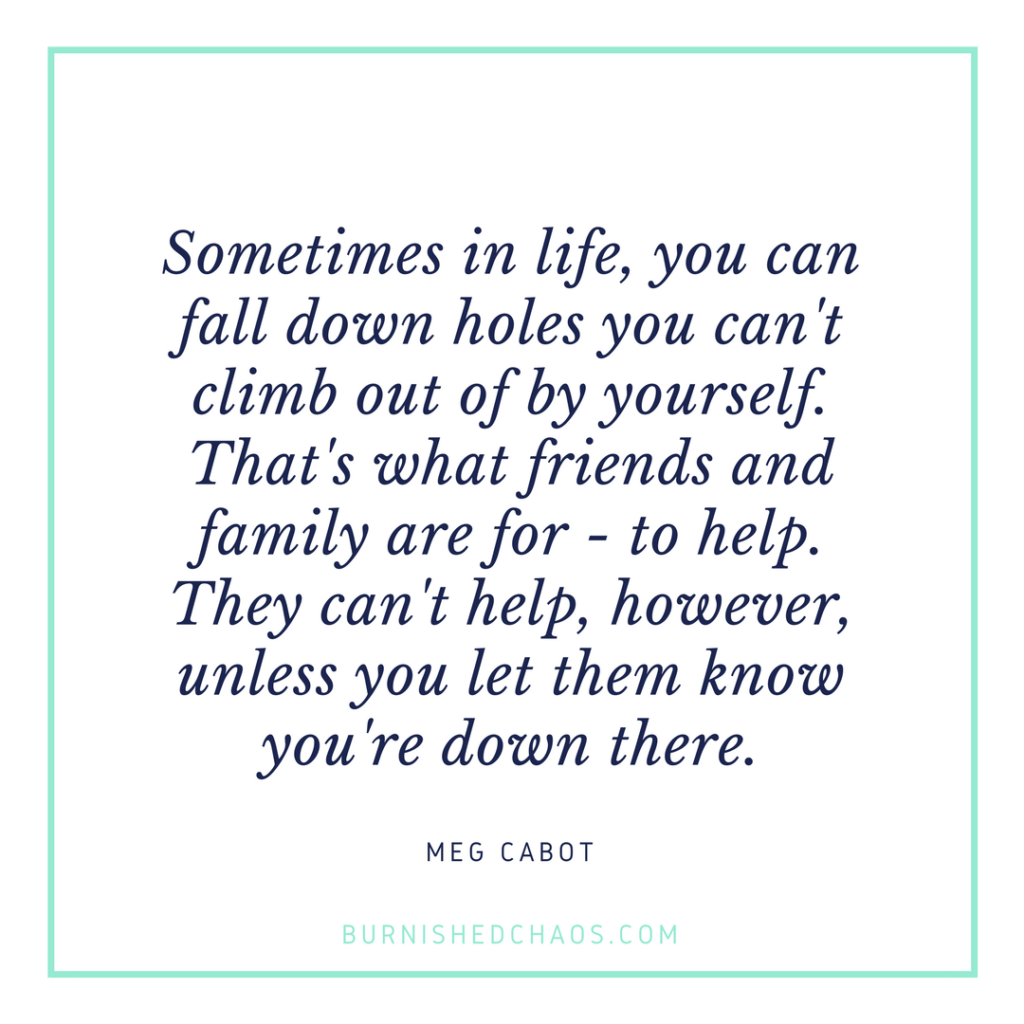
It is not always easy to ask for help, many of us struggle with it. Feeling guilty, feeling like you are a burden or a bother is very common feelings when it comes to sharing and asking what you need of others.
I implore you to push past those feelings. A few of my friends have been truly amazing. They see and understand me. They know no one is perfect and if I need to be called out, they do….but they are incredibly compassionate and helped me see that I am one very important thing…human. This makes me, and you….imperfect, beautiful, unique, and worthy of love. Even after mistakes, even when we have self-doubt, even when we know who we truly are and want to be but feel stuck….all of it.
Ask for help, your heart will begin to open. You will be able to see beyond your ‘perceived’ reality.
So, what happens when we ask for help? We feel less alone. We feel a lot less ‘I’, and a lot more ‘we’…and our heart begins to soften. Our hearts begin to open…and our chakra will be freer to spin and ground with our true self.
Out of Balance?
When out of balance and feeling ‘I’ or alone, loneliness is the #1 feeling. Feeling different, feeling like you do not ‘fit’, but I assure you that you do!
Have you had your heart broken? Your heart chakra will be affected. Do you slouch? Is this due to wanting to protect your heart? If so, this closes you off to the possibilities of healing. This is something to really be honest with yourself about.
Begin to look around you. Are you surrounding yourself with those that lift you up? Those that help to make you feel like you ‘fit’? Do not misunderstand, your happiness is absolutely yours and yours alone to cultivate and create every single day. Very much a choice….BUT you need to decide if your relationships are nurturing you or depleting you. Relationships are meant to help each other flourish, and to provide each other support, because life is hard!
If you just instinctively know that you have a relationship that is depleting you, there are some evaluations that need to be done, and decisions to be made. If this toxic relationship is a friend, that is ‘relatively easy’. If it is a significant other or a family member causing you constant strife, that is not so easy. Take some time to reflect.
Can you let go?
Can you forgive?
Can you find the compassion for others, even when right now you do not feel it is warranted?
I think you can!
Since your heart chakra rules the heart, lungs and ribs, out of balance can begin to manifest into more physical symptoms such as coughs and chronic bronchitis, heart pain (literally), heart problems minor or otherwise, hypertension (all pointing back to the stress and heartbreak) and others [3].
Sacral Chakra=”I love”
If the imbalances sound familiar to you, you may be thinking, “How do I bring my heart chakra back into balance?”
There are a few things…YAY!
Thymus Thump
The first is an energy technique that I learned from Susan Eden, a master in her field.
Here is a great YouTube video that her daughters created to explain how it works. Warning, they are bundles of energy!
Repeat affirmations to yourself for the heart chakra such as:
I forgive others and myself so that I can thrive.
I am open to love in all of its forms.
I create loving and nurturing relationships.
I allow all emotions to flow through me, with gratitude and love.
Aromatherapy for the Heart Chakra
There are a number of essential oils that help support the heart chakra and encourage love and forgiveness of both others and self to the user. You can use them in a diffuser, or place in an inhaler and use whenever it is needed.
My most recommended essential oil is Sandalwood Santalum album. Others that are beneficial are Ylang Ylang Cananga odorata, Jasmine Jasminum grandiflorum, Mandarin red Citrus reticulata and Bergamot Citrus bergamia. (Not an all-inclusive list)
Yoga for Heart Opening
If you are a yogi like me, make sure to include poses in your practice that are bending backward (backbends). These instinctively open your heart. In the poses, close your eyes and really focus on your breath. Recognize that this position is somewhat vulnerable and that is ok. You are safe.
The Yoga Journal goes over some of those poses here.
This is a good start to get you on your way to balancing the heart chakra. Take some time every day to visualize the chakra spinning freely in all its glory to support you on your path to feeling secure, and well on your way to greatness. <3
References
[1] Arewa, Caroline Shola, 2001, The Way of Chakras UK: Thorsons
[2] Ananda Yoga brings hatha yoga back to its original spiritual essence. Retrieved from https://www.expandinglight.org/anandayoga/members/AYSarchives/Anahata.phpSvadhishthana
[3] Healing the Heart Chakra. Retrieved from http://www.chakras.info/heart-chakra-healing/
Resources
Chakra series – Anahata or heart chakra. Retrieved https://www.ekhartyoga.com/articles/chakra-series-anahata-or-heart-chakra
Like so many practices in life, I encourage you to become educated on the proper use of essential oils. When using them, please do so cautiously, understanding that there is often misinformation on the internet. You can be assured that I support only educated and proven resources. While essential oils should not be feared they should be respected and used properly to ensure the safety of the individuals using them.
Please note that I am not a medical practitioner. The content of this website is provided for general informational purposes only and is not intended as, nor should it be considered a substitute for, professional medical advice. Do not use the information on this website for diagnosing or treating any medical or health condition. If you have or suspect you have a medical problem, promptly contact your professional healthcare provider. By using this website, you assume full responsibility and liability for your own actions.


















